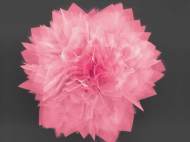Creating GeS nanostructures with flower patterns
 Researchers from North Carolina State University have devised a way to create nature inspired elements out of germanium sulfide (GeS) – a non-toxic semiconductor material – that could one day be used in creation of next-generation energy storage devices and solar cells. They managed to use this method to create flower-like GeS structures that have extremely thin petals with an enormous surface area.
Researchers from North Carolina State University have devised a way to create nature inspired elements out of germanium sulfide (GeS) – a non-toxic semiconductor material – that could one day be used in creation of next-generation energy storage devices and solar cells. They managed to use this method to create flower-like GeS structures that have extremely thin petals with an enormous surface area.
“Creating these GeS nanoflowers is exciting because it gives us a huge surface area in a small amount of space”, said Dr. Linyou Cao, an assistant professor of materials science and engineering at NC State and co-author of a paper on the research. “This could significantly increase the capacity of lithium-ion batteries, for instance, since the thinner structure with larger surface area can hold more lithium ions. By the same token, this GeS flower structure could lead to increased capacity for supercapacitors, which are also used for energy storage.”
The process in which these flower structures are created starts with heating of GeS powder in a furnace until it begins to vaporize. The vapor is then blown into a cooler region of the furnace, where the GeS settles out of the air into a layered sheet that is only 20 to 30 nanometers thick, and up to 100 micrometers long.
When the process is repeated and the additional layers are added, the sheets branch out from one another in a floral pattern similar to a marigold or carnation. This effect is achieved by control of the flow of GeS vapor in a way which allows the vapor to spread out in layers instead aggregating into clumps.
The ability to form neat layers or sheets makes GeS similar to materials such as graphite, however, it has an advantage over graphite since it is very good at absorbing solar energy and converting it into useable power. This makes it attractive for use in solar cells, particularly since GeS is relatively inexpensive and non-toxic.
The process of boundary layer diffusions in the growth developed by NC State University researchers is the first of its kind for nanosheets, and one of its benefits is the high growth rate of GeS nanosheets (3–5 μm/min) which is 1 order of magnitude higher compared to other currently used nanomaterials (such as nanowires) and thin films. The research of boundary layer diffusions effect may be used for creation of other nanosheets from other chalcogenide compounds that can grow rapidly.
For more information, read the article published in the journal ACS Nano: “Role of Boundary Layer Diffusion in Vapor Deposition Growth of Chalcogenide Nanosheets: The Case of GeS”.









Leave your response!